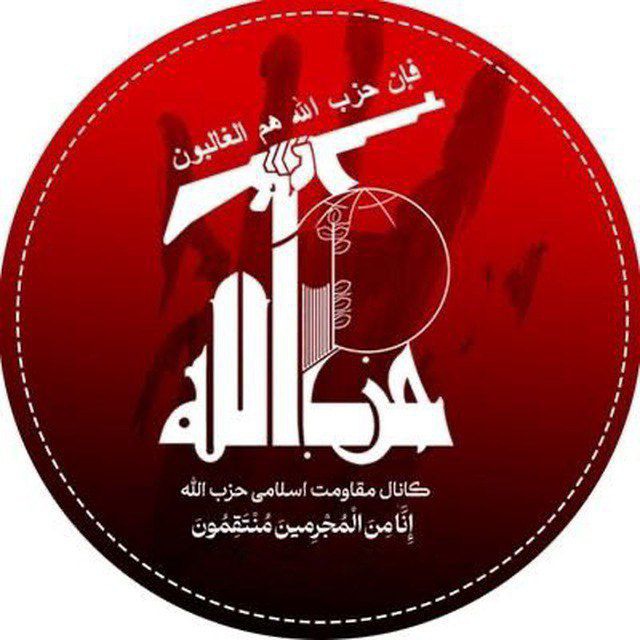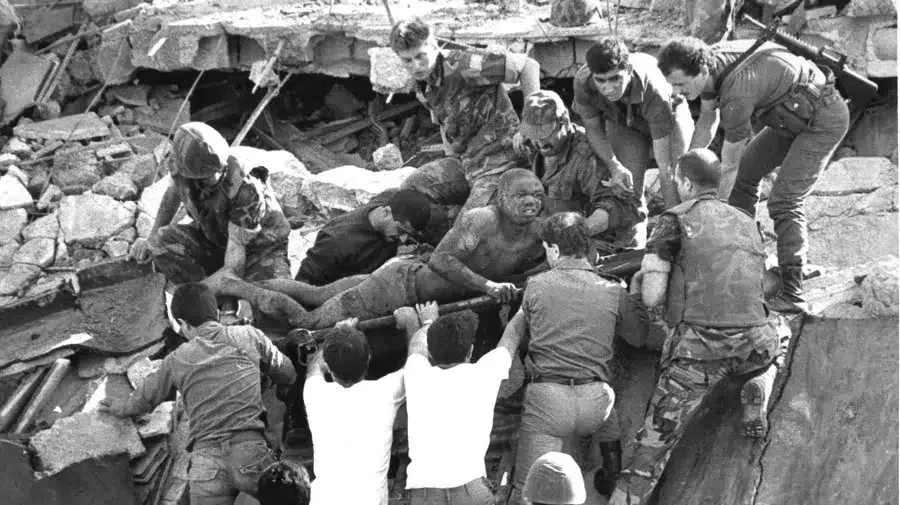"Around 5:30 a.m. on the morning of Sunday, October 23, 1983, a yellow Mercedes truck entered the main compound of the United States Marine Corps (the marines) near Beirut Airport. The truck driver circled the area south of the parking lot of the compound and then left the premises. At 6:22 a.m., the truck returned and broke into the compound. However, this time it approached from the west side of the parking area, making a detour, before heading directly towards the barbed wire fence that separated the parking area from the building. After crashing through the fence, it broke through the front doors and exploded in the main lobby inside the building. The force of the explosion lifted the four-story building into the air, destroying the support columns and foundations before the entire building collapsed.
Numerous narratives and theories have been presented about what happened; most people agree with the conclusions of investigations conducted by the US government. However, no group has taken responsibility for the act or presented an explanation of how it was carried out. Eyewitnesses, on the other hand, unanimously agreed that what occurred seemed like a well-planned operation. The guards said they had previously seen the truck and did not suspect anything about it because it resembled the trucks that delivered supplies to the compound. The guards were caught completely off guard and did not even open fire on it before it breached the security checkpoint and the main entrance. According to Deputy Sergeant Eddie DeFranco, who survived and was stationed at guard post number seven, near the main entrance where the truck broke in, when he first saw the truck before it approached, he believed it was just another of the dozens of trucks that transported water, goods, and other equipment from the airport on a daily basis.
Conflicting estimates have circulated regarding the amount of explosives planted in the truck, but most experts believe it was approximately five tons of highly explosive TNT. The explosives were deliberately arranged in order to direct the force of the explosion upward, resulting in significant destruction and injuries to everyone inside the building. It was later announced that 241 US citizens were killed, including 220 marines.
Just a few minutes after the explosion, another massive explosion struck a building known as Drakkar, a few kilometers away, where the French paratroopers were stationed, killing 58 of them. The cause of this explosion is also disputed; however it was initially attributed to a car bomb loaded with approximately five tons of explosives.
Another narrative about the truck was presented 30 years later. In 2013, the French newspaper Le Monde published an investigation based on the investigations carried out by the French government. It cited testimonies from French soldiers who were in a nearby building called Catamaran, located less than 100 meters from Drakkar. They stated that they had gone onto the balcony after the US compound explosion, and, two minutes later, Drakkar exploded. However, they claimed they did not see any truck entering the building. The officer responsible for protecting the surviving building, Omer Marie Magdeleine, stated that “the building was surrounded by fences, each entrance was protected by barriers with machine guns and anti-tank weapons, and the street was closed from both sides. Between the fences and barriers it would be impossible for a truck to pass without being noticed.” Nonetheless, none of these witnesses were interviewed during the official investigations, and survivors were prohibited from speaking to anyone about the event.
Washington sent retired admiral Robert L.J. Long, a representative of the US Department of Defense, to investigate the bombing of the marines’ headquarters. But the situation was rapidly deteriorating for Washington’s forces, as operations against the marines continued until former US President Ronald Reagan announced, on February 7, 1984, the transfer of the marines from the bases in Beirut to US ships on the shore. Over the next two weeks, the battleship USS New Jersey carried out retaliatory bombing operations against many areas in Lebanon before the US order was issued to permanently leave Lebanon and its waters on February 26, 1984.
Who was behind the operation?
The bombing at the marines’ headquarters was not an ordinary event for Washington. It had significant repercussions which eventually led to the collapse of Washington’s puppet government in Lebanon and the retreat of “Israeli” forces into southern Lebanon. Because of the ongoing Cold War with the Soviet Union, Washington initially accused Moscow and Damascus of being behind the attack or facilitating it. However, US military intelligence swiftly blamed a new group on the scene: mujahideen with connections to the Islamic Republic of Iran.
A relatively short time after the US directly accused fighters close to Iran of being behind the attack, the West started linking it to the attacks on US intelligence officers in Lebanon, including the captured US and Western hostages. Within a few years, the Western governments began to suggest that the groups affiliated with Hezbollah were responsible for these operations. This is when the martyr Imad Mughniyeh was placed at the top of the US most wanted list.
US Central Intelligence Agency (CIA) teams that rotated through Middle East assignments always carried a grudge against those whom they held responsible for the attack. According to a number of US reports written by former intelligence analysts, “the hunt for Imad Mughniyeh was personal.” Washington also accused al-Hajj Radwan (Imad Mughniyeh) of orchestrating the bombing of the US embassy in Beirut in 1983, which led to the destruction of the entire CIA station and the death of the head of the agency’s Middle East branch. It was also claimed that he was responsible for the abduction and execution of the CIA station chief William Buckley in 1984. Buckley had been sent to Beirut in 1983 to establish a new CIA station after the previous one was destroyed. A senior official in the Central Intelligence Agency stated that “Buckley’s capture led to the closure of all CIA activities in [Lebanon].”
In his book Known and Unknown, Donald Rumsfeld, the US special envoy to Lebanon during the Reagan administration, devoted a special chapter to the bombing of the marine barracks in Beirut, which he called “Smiling Death.” Everyone who writes about that operation mentions that, according to eyewitnesses, the driver of the truck that destroyed the marines’ headquarters was seen smiling seconds before the explosion. The explosion killed 241 soldiers out of the 350 who made up the 1st Battalion 8th Marines, and is the largest blow to the marines in their history. Rumsfeld stated the bombing of the Marine Corps Headquarters was the largest terrorist attack on the United States before September 11th.
Rumsfeld himself quoted a statement by the then US vice president, George H.W. Bush, in which Bush vowed, “we’re not going to let a bunch of insidious terrorists, cowards, shape the foreign policy of the United States.” Rumsfeld commented that “I was uncomfortable with his word choice. I have never thought people willing to drive a truck bomb into a building and kill themselves were cowards.” Rumsfeld also notes that he told US secretary of state at the time, George Shultz, firstly, that US policymakers “should close the gap between inflated perceptions of our abilities and reality;” secondly to “never use US troops as a “peacekeeping force,” we were too big a target;” and, thirdly, ”keep reminding ourselves that it is easier to get into something than it is to get out of it.”
Today, 40 years after one of the most important resistance operations against the US occupation in the region, the leaders of the United States are repeating the same scenario. Just days ago, United States Secretary of Defense Lloyd Austin ordered 2,000 US soldiers to be prepared for the possibility of participating in a war alongside “Israel.” However, experts believe that this group of military personnel will not have combat roles but will be limited to logistical support. Nevertheless, this step may serve as a prelude to sending more soldiers on combat missions in the future. In the event that the United States decides to directly enter the ongoing war today, those in Lebanon and the region are waiting for them. Among them are Lebanese who adhere to the Lebanese Ministry of Tourism’s campaign, saying to them, “Ahla Bhal Talleh!”



interesting read, thanks for posting.
deleted by creator